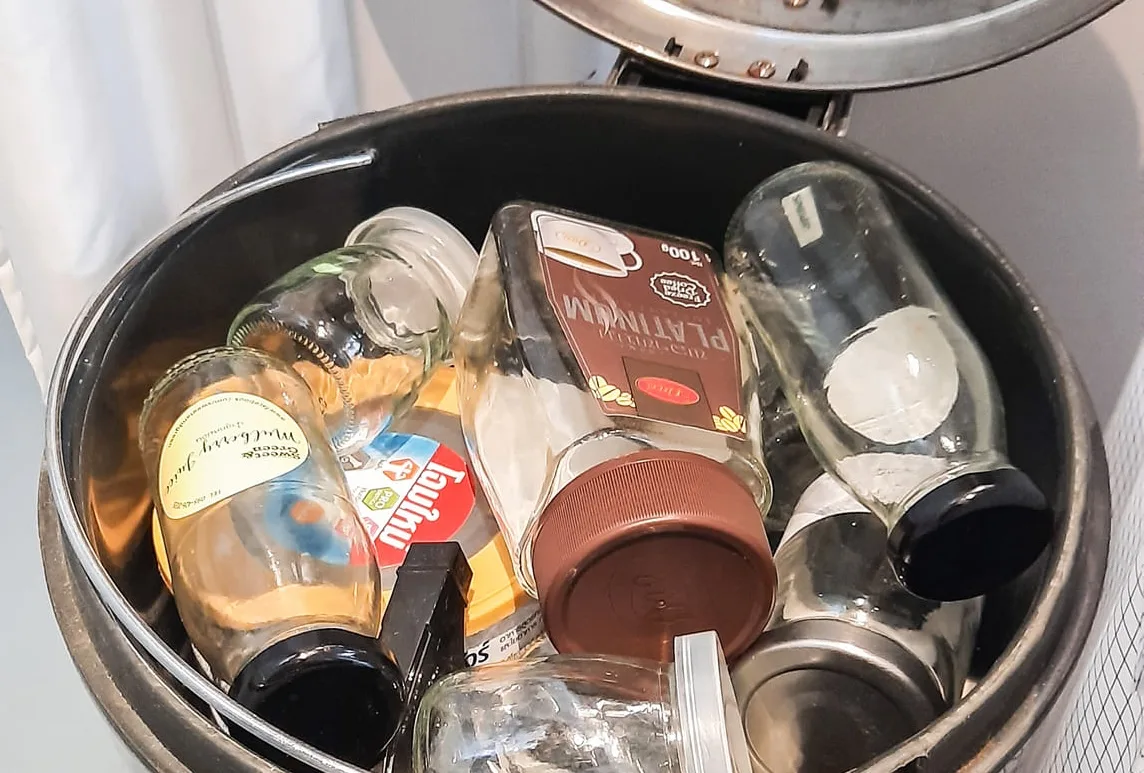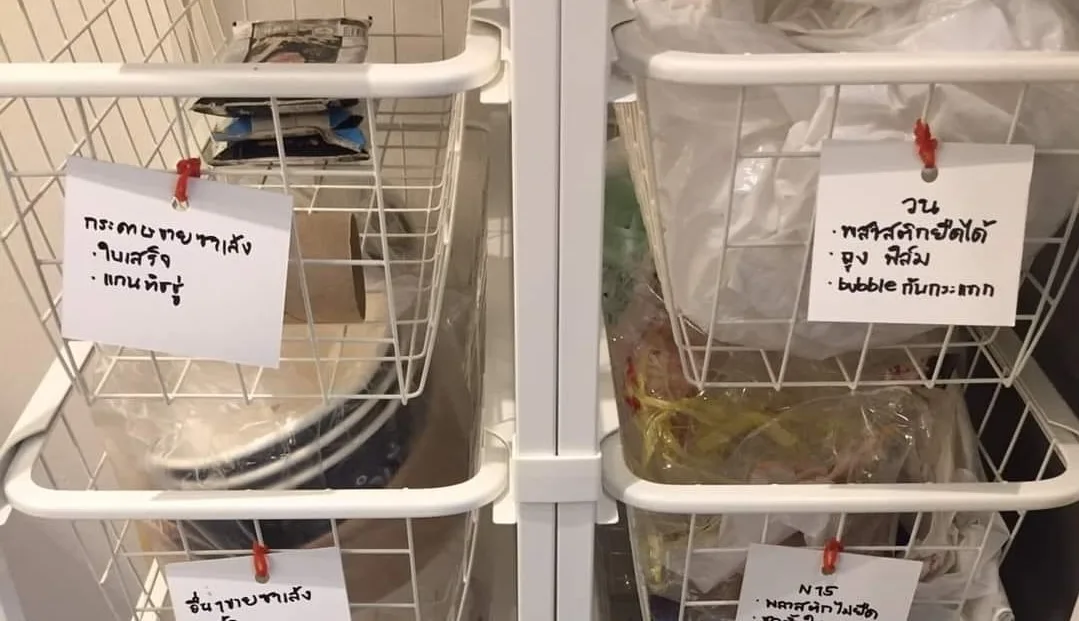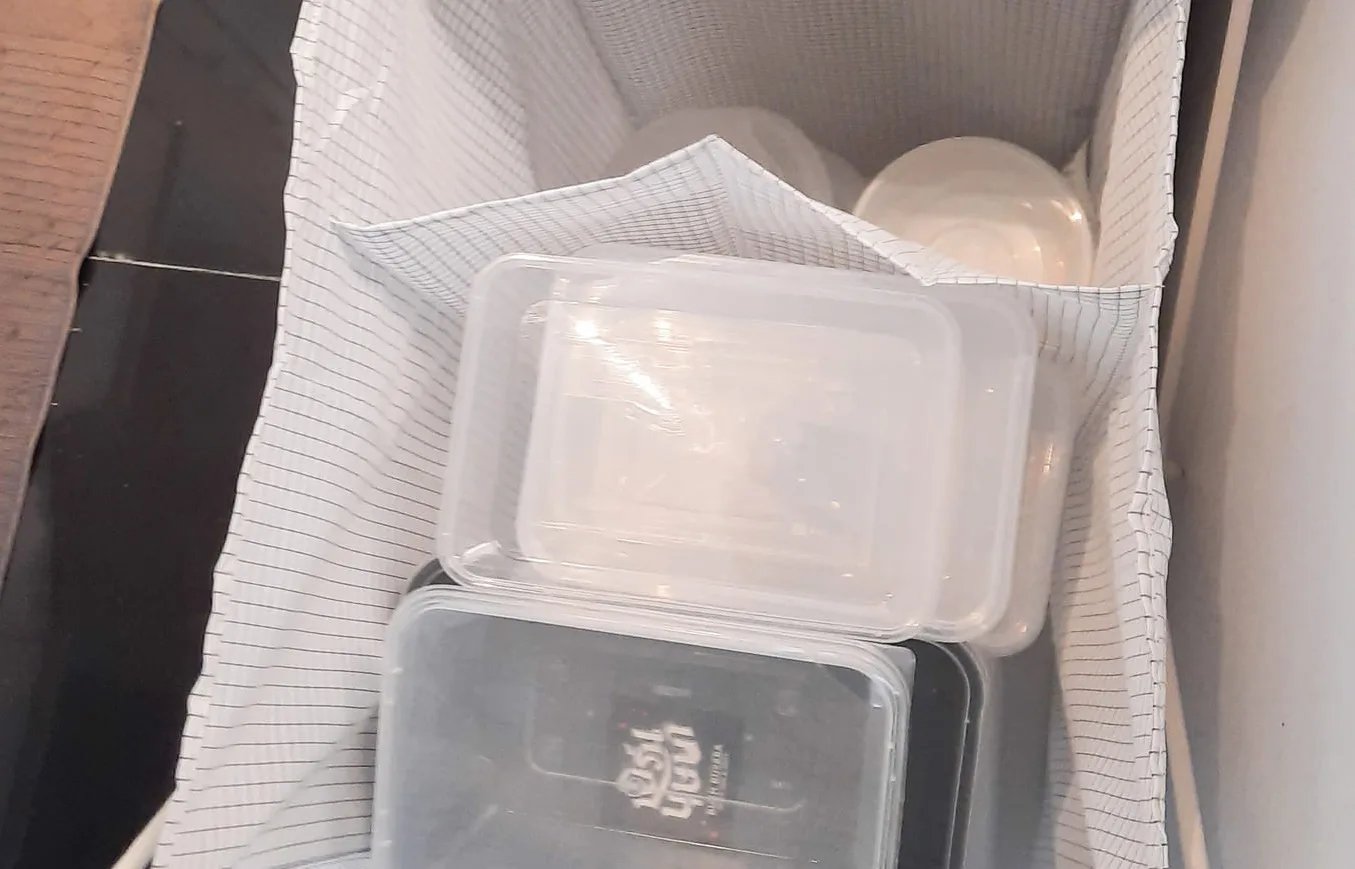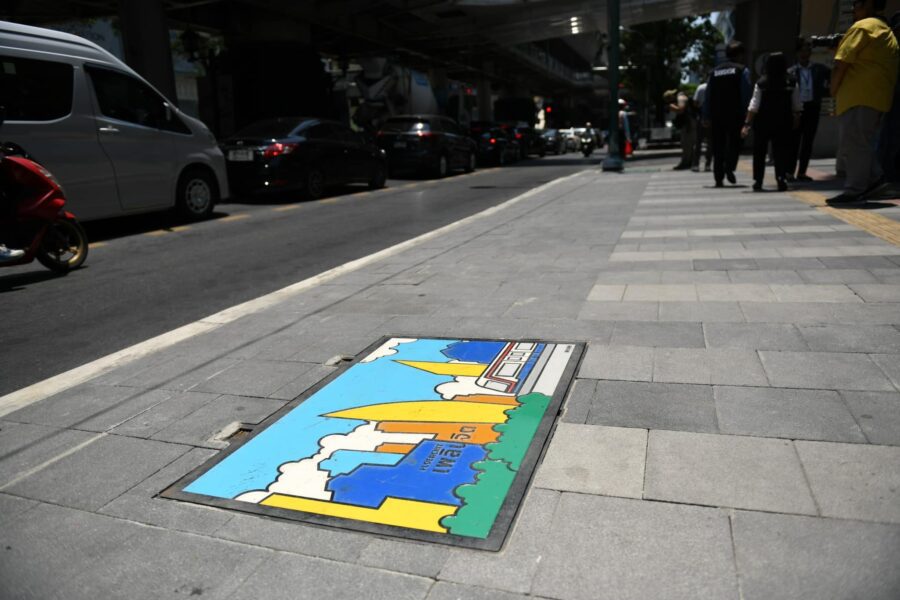By Natthanon Nakkhong
Homes are considered to be one of the sources of waste, which is found in almost every corner, every room, everywhere, whether it is a bedroom, bathroom, kitchen, living room, work room, or storage room. Information from the Ministry of Natural Resources and Environment states that “There are more than 1,400 types of waste in one home.”Blue Pollution, 2022) Therefore, separating waste from home is considered a starting point to help reduce the amount of waste. And this waste will not become worthless if we manage it properly and reuse it.
Today, I would like to invite everyone to learn about the ideas and approaches of one family that changed the way they sorted out their garbage, making it a mess, and making it neater, cleaner, and more beneficial.
Boy's house is a family of 3 people, consisting of Boy, his wife and a little one. The average age is 27 years. Boy works as an architect while his wife works as a university lecturer. They have a lifestyle like most families. They like reading books, watching movies/series, cooking, baking, playing music and going to the market. But what is quite different from other houses is "garbage separation", which has been a habit that his wife has had since before they started dating and has continued to do until now because there is a lot of garbage and she takes care of the environment and helps the garbage collectors. However, the more they separate, the messier the house becomes, until there are piles of garbage everywhere. Therefore, they have to change their approach.

A turning point
The limited space in the house caused the sorted waste to be piled up in various corners of the house, more and more than it could handle. On top of that, it also caused dust to accumulate. Then, in April 2022, the long holiday arrived, so it was time to reorganize. The main challenge was that it had to be able to separate a variety of things, be easily visible, not clogged, and ventilated.
Same old place but new approach
Mr. Boy and his wife have designed an interesting way to manage waste in their home. They have thought and solved the problem until they can manage waste better in the same space. It is a method that anyone can follow. They just need to use a prefabricated steel frame with grating that can be found at hardware stores and assemble it into a shelf in the same corner as they used to separate waste, along with writing down the type of waste and its destination.
Originally, both of them already had knowledge in waste separation, so changing the approach did not change the existing separation method, but made it more organized and easier. The waste is divided into 4 types: general waste, recyclable waste, reusable waste, and food scraps (separate for disposal), arranged as follows:
The 'small grid' on the left is used to collect waste that will be taken to be disposed of in front of the house for the cart vendors. The right side is used to collect waste that will be sent to the recycling project for processing or making alternative energy.
The top 'large grid' contains waste that takes up space and has the same destination, such as plastic bottles and plastic boxes. The middle and bottom tiers contain plastic bags and reusable paper bags.
'Cloth bins' are used to store reusable plastic food containers. Since I work from home, I order food frequently, so I end up with a lot of plastic containers. So I choose good quality plastic containers to reuse. The plastic containers that are brittle and easily broken are put into a large grid.
'Stainless steel containers' used to store glass bottles and jars that are intended to be reused.

Waste sorting with purpose
In addition to the orderliness of the garbage pile in the house, another important reason why this house separates the garbage is to make the most of this garbage by “donating” it to various projects and to the tricycle riders who can make the garbage valuable again.
'Stretchable plastic bags and plastic films' such as shopping bags, shopping bags, ziplock bags - medicine bags, bread bags, ice bags, plastic mailing envelopes, water bottle wrap film, milk box wrap film, and product wrapping film, etc. These items will be sent to "Wan", a project that recycles plastic for reuse, making plastic circulate in the system, helping to reduce the amount of plastic waste released into the environment.
'Cat food bags' sent to the "Green Road Project" that turns waste into green roads, paving blocks, tables, chairs and construction materials to be donated to schools, temples, national parks and public areas nationwide.
'Non-stretch plastics' such as those removed from mailboxes, dishwashing detergent bags, fabric softener, toothpaste tubes, cosmetics, snack bags, condiment sauces, underwear, and used plastic-mixed fabrics, etc., are sent to N15 Technology, the creator of a system to receive orphaned (non-recyclable) waste and turn it into fuel for power generation.
'Plastic lids or hard plastic' separate the lids first, then wash and dry them and send them to donate at the collection points of "Precious Plastic Bangkok", a plastic recycling project to turn them into new products with value.
'Metal waste' such as beverage cans, can lids, discarded metal equipment, etc. Mixed plastics (clear, opaque, cloudy) such as snack lids, soft-rice lunch boxes, and milk bottles, etc. Crispy plastics such as plastic egg crates, dessert trays, and receipts, etc. Colored printed boxes such as snack boxes and tissue paper rolls, etc. Glass, curry bags, boxes, food cups, plastic-coated paper, and food liners are waste that can be separated and given to tricycle riders to sell on.

How is this type of household waste separation good? ?
The variety of waste and the orderliness are what we received as the task. But the result of sorting the waste at home is the satisfaction of the people in the house like Mr. Boy and his wife who did it better than doing nothing. Reusing waste helps reduce the amount of waste. The systematic separation helps to reduce the burden on the end user and can be fully utilized. At the same time, sorting the waste at home also helps create good relationships in the family because both people do not separate the duties but work together and also have the goal of training their children to continue.
Ultimately, with a goal of sorting waste for recycling and reuse, Boy and his wife were able to reduce household waste from going to landfill by more than 50% per month.
"Because we try to reuse things, waste is reduced," said Mr. Boy.
Lessons learned
- Trying to change the way you sort your waste may help you find a method that suits your home and your daily routine better.
- Waste separation from the beginning at our homes creates more benefits than reducing waste management costs because there are always people who are ready to add value to waste with open arms.
- In addition to helping reduce waste problems, sorting waste at home is an activity that promotes family participation, allowing family members to interact with each other more, resulting in positive long-term relationships.
Reference list
- (Boyd Leungarram, Interpersonal Communication [Messenger], (September 15, 2024)
- Boyd Leungarram. (April 14, 2022). Ideas for separating waste at home [Facebook post]. Retrieved from https://www.facebook.com/groups/219194202444930/permalink/601614487536231
- Khaosod. (2022). Cool idea! Young man shares how to sort trash, turning a boring task into a fun one, and also helping to keep the house tidy and clean. Netizens share a lot.. Retrieved from https://www.khaosod.co.th/lifestyle/news_7004164
- Department of Engineering and Sanitation. (2022). Uncovering the source of “home waste”, the origin of waste, how to dispose of it before it becomes a big problem. Retrieved from https://www.nakhonmaesotcity.go.th/webs/th/agencies/3/detail-news/N0001720.html
illustration
- from https://www.facebook.com/groups/219194202444930/permalink/601614487536231/








